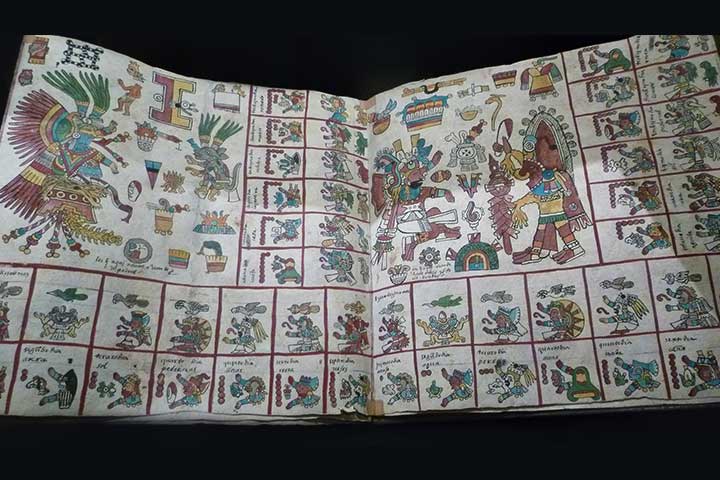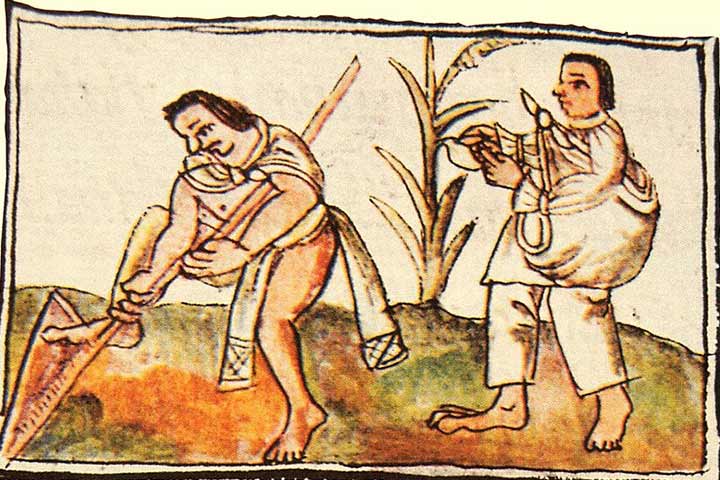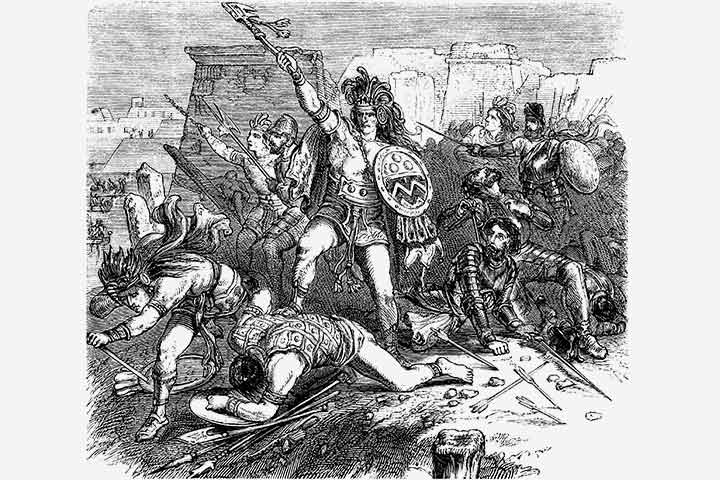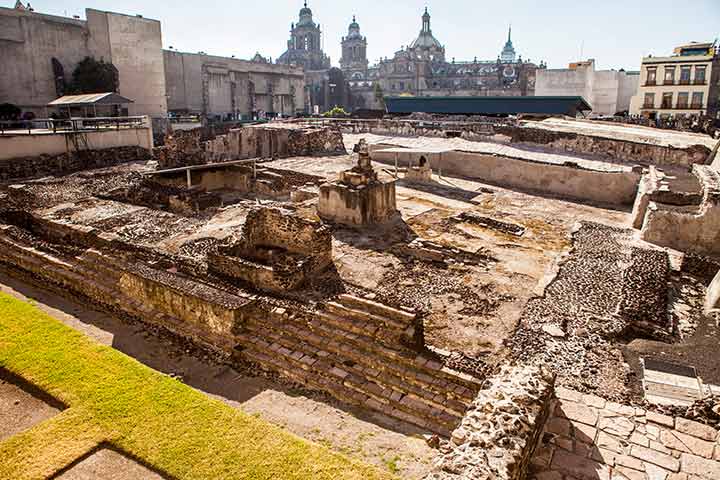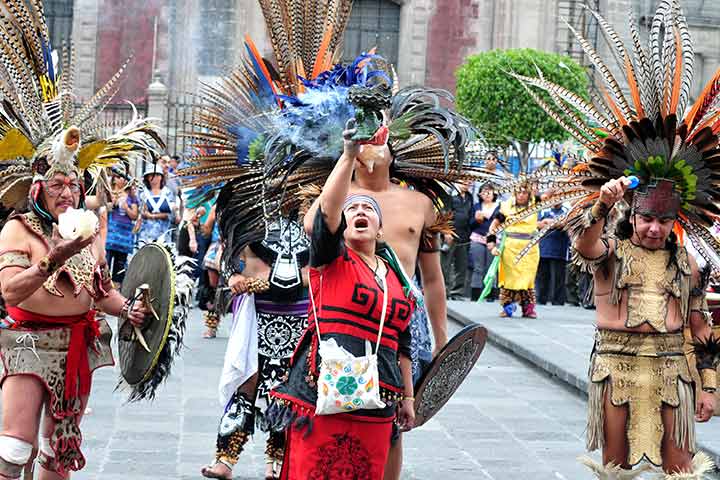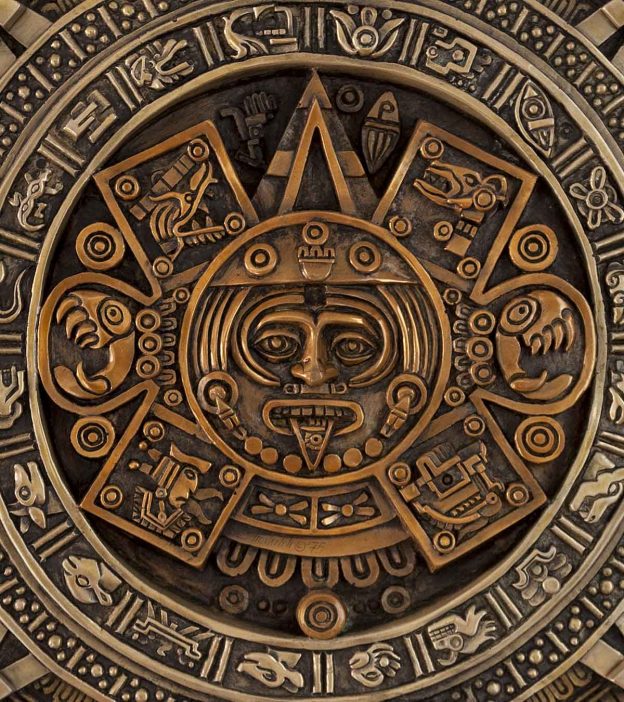
Aztecs’ acute agricultural prowess made them a prosperous civilization. Their rapid rise in power and influence is admirable considering they barely used any metal weapons and armor. It is the rich and fascinating stories about such ancient civilizations that make history more interesting. We seldom realize it, but the influence of Aztecs continues to persist even today in the food we eat, the words we use, and the places we know.
Have you ever seen any of the Aztec relics? Do share more about it with us in the comment section below.
The Aztecs founded the Mesoamerican civilization or the Aztec empire. There is a country believed to have originated from the Aztecs. Find out more through the interesting Aztec facts for kids in this post. The civilization boasted an influential and rich culture and covered a different part of modern-day Mexico. They dominated North America for more than two centuries until the Spanish defeated them. Read on for a collection of facts about the Aztecs and their influence over North America to keep the children engaged. Your little ones will find them fascinating and share them with their friends.
Name and Origins
- The name ‘Aztec’ comes from theNahuatl languagespoken by the Aztec people. It means the ‘people of Aztlan’, which is considered to be a mythical place from where all the Aztecs originated.
- Some scholars and historians speculate thatAztlan might be a real placethat was probably located somewhere betweennorthern Mexicoand the US border.
- The Aztec people called themselvesTenochcaandMexica. The term ‘Aztec’ was acollective termused by the Tenochca people to refer to all communities that originated from the land of Aztlan.
- Several Europeanhistorians of the early 19th centurybegan referring to the Tenochca people as the ‘Aztecs.’ The word was eventuallyadopted by other historians, including Mexican historians, and the name Aztec became a common term used for the Tenochca people.
- The Aztecs were originally anomadic tribe. They migrated to the south from northern Mexico. Legend says that in the year1323, the Aztecsarrived at a lakewhere they saw aneagle perched on a cactus, eatinga snakethat it held with its claws. They believed it was a good sign and decided to make a city and settle right where they spotted the eagle.
City and Civilization
- The Aztecs drained the swampy land of water and built ahuge artificial islandon thewestern endof the lake, which was namedTexcoco.
- The island became the capital of the Aztecs, and theynamed the place Tenochtitlan, after their own civilization, Tenochca.
- The Tenochtitlan island would be further divided into two parts. The substantial southern part of the island retained the nameTenochtitlanwhile the northern part was calledTlatelolco.
- The year 1376 marked the formal beginnings of the Aztec empire. An Aztec calledAcamapichtliwas chosen by the people as their first ruler.
- In the year1440, MoctezumaIwas elected to the throne of the Aztec empire. He and his descendants eventually expanded the Aztec empire. By the early 1500s, the Aztecs overthrew most regional kingdoms to become a dominating superpower.
- Tenochtitlanbecame the center for trade and commerce. At its peak, the city boasted apopulation of 300,000 to 700,000, which included all the suburbs that surrounded the lake.
Language and Art
- The Aztecs’ native language wasNahuatl, which they continued to speak even after switching from a nomadic lifestyle to an agrarian one. The language hadno alphabet systemand relied on pictorial depictions and communicated through pictorial sketches.
- Most Aztecs knew how to writeNahuatl, although it is believed that priests did most of the writing.Nahuatl imageswere drawn usingcharcoal, on paper made from thebarkof the tree orskin of an animal. Coloring was done using dyes from fruits and vegetables.
- The Aztecs loved art.Paintingon deerskin was common, as waspottery andceramic painting. However, the Aztecs arebest knownfor theirstone sculptures of animals and gods,their favorite subjects. Animals that they sculpted with amazing details still exist today.
Agriculture and Economics
- The Aztecs were excellent farmers. They would build small artificial islands calledchinampaswithin the lake. Each island would serve as apatch of a farm.
- Narrow canalsthat bordered the islands served as the source of water for the farms. The Aztecs would move from one farm to another byrowing a canoethrough these canals.
- The essential crop for the empire wascorn(also called maize), which was widely cultivated. Other crops grown weretomatoes, squash, beans, chili peppers, potatoes, andavocados.
- Aztecs would alsofishandhunt. Common animals hunted by them includedrabbits, wild turkeys, armadillos, coyotes, and evensnakes.
- If you loveChocolate, then thank the Aztecs! Kingdoms that were under the rule of Aztecs had to paycocoa beans as royaltyto the king. Chocolate beans were imported to the capital Tenochtitlan where it could not be grown naturally.
Aztecs mixed powdered cocoa beans with water to create a frothy drink consumed with other flavorings such ashoney, chili pepper,orflower petals. Chocolate beverages were often drunk after dinner.
- The early use ofvanilla also datesback to the Aztec era. The Aztecs learned how to cultivatevanilla plantsfrom tribes they had conquered. Vanilla, which was also popular among the Aztecs, was oftenused to flavor the chocolate drinks.
- Cocoa beanswere acommon currencyused by Aztecs. Prices of commodities were defined as per the number of cocoa beans the item was worth.
- The Aztecs hadweekly markets, usually in theTlatelolco partof the Tenochtitlan city. Farmers, artisans, fisherman, and other traders would sell their produces and wares. Some historians believe that the market was heldfive days a weekand was visited by over 10,000 visitors.
- Interestingly, Aztecsdid not use metals和大部分的weapons comprised ofsharpened stonesandwood batons. They did seem to have some knowledge ofmetal smeltingand used gold to make decorative items that were used in religious ceremonies.
Society and Culture
- Aztecs worshiped three dozen or moregods and goddesses, includingsupernatural deities. There had agod for almost everything:the wind, sun, moon, and even gambling!
- The Aztec religion and religious practices were based on theAztec calendar. There were two calendars: one told thedateswhile the other only said the day for specificrituals. The standard calendar cycle consisted of365 days, and the ritual cycle had260 days. The Aztec calendar stone, also called theAztec Sun Stone, is probably the most famous representation of their calendar.
- AXiuhphualliwas the regular calendar that was based on the movement of the sun. Decisions about agriculture were taken as per this calendar. TheTonalpohualliwas the ritual calendar and determined when the different gods have to be worshiped and various festivals celebrated.
- At the center of Tenochtitlan lied a massive temple complex called theTemplo Mayoror the ‘Greater Temple.’ Several Aztec rulers built and expanded the temple in succession, during their rule. The deities to which the temple was dedicated wereHuitzilopochtli (god of war), Tlaloc (god of rain & agriculture),andQuetzalcoatl (wind god).
- 少林寺的原始结构没能活下来。However,archaeological excavations和他的torical records show that the main shrine of the temple was placed ona large pyramidal structure with a flat top.The temple was entirely made of stone blocks (just like Egypt’s pyramids). Stones were most likely transported through boats using the canal system of the city.
- Aztec societymade education mandatory. Each child would have to go to school to get an education and learnthe native tongue.
- Aztec society hadseveral hierarchies. The elite were the ’nobles.’ The supreme among them were called the ‘lords,’ who could hold an essential position in the government or the military.
- Slaverywas a common part ofAztec society. Families could sell children as slaves. A person could alsosell themselvesas a slave to pay off debt. Slaves were often indentured, which means they were only slaves for a period as directed by their contract.
- Although cruel,slavery among the Aztecs was very liberal. For instance,slavery was not inherited, which means children of slaves were spared from slavery. Slaves could own their possessions, marry, have their land, andeven have slaves of their own. A slave could also buy their freedom by paying a fee to their master.
- Human sacrificewas another infamous attribute of the Aztecs. Sacrifices were usually made to appease the gods. Most sacrificial human beings wereprisoners of war. Children would be sacrificed during difficult times to convince the gods for mercy.
- Sacrifices were quite likely made at thetemple (probably Templo Mayor)by priests using sacrificial knives made of stone.Cannibalismof those sacrificed was another attribute displayed by the Aztecs.
- Historians have been puzzled by the need for a flourishing civilization to practice cannibalism. Historians for long believed that cannibalism was a way for the Aztecstoinclude proteinin their diet.However, Tenochtitlan had a rich source of fish and other animal food.Religious beliefscould probably be the only reason why the Aztecs may have resorted to cannibalism.
- The Aztecs enjoyed sports too, and their favorite was the ball game calledUllamaliztli. The game involved two teams facing one another andshuttling a rubber balltowards one another by striking it only with their hips. Hitting the ball withanotherpart of the bodyor holding it with hands would result in the team losing a point.
- Ullamaliztlihad areligious significancefor the Aztecs.Ullamaliztli matcheswould be organized in markets, and the local crowd would even bet on their favorite teams to win.
European Invasion and Downfall
- The western world had theirfirst contact with the Aztec Empireduring the visit of the Spanish explorer and conquistador (conqueror in Spanish)Francisco Hernandez de Cordoba. His visit quickly prompted the Spanish’ interest in the Aztec empire.
- 1519年11月,西班牙征服者Hernan Cortes, with his 400 trained soldiers, arrived at Tenochtitlan. Cortes and his army received a warm welcome by the then Aztec kingMoctezuma II.
- It is said that Moctezuma II probably thought Cortes to be an incarnation of the Aztec godQuetzalcoatl, whose return was prophesied in the Aztec mythology. It may explain the reason behind the warm welcome to the Spaniards.
- The Europeans brought with them several pathogens, which theAztecs were not immune to. Smallpox was one such major diseasethat the Spanish brought to the Aztec empire. Scores of the Aztec population perished due to smallpox.
- As if the disease was not enough, the Aztecs eventually were in a full-blown war with the Spanish.Cortes had secretly alliedwith other tribes in the region that were at war with the Aztec. The kingdoms that were against the Aztecs provided Cortes with slaves, which includedLa Malinche. She would become theprincipal translatorfor Cortes for his communication with the Aztecs, who spoke the Nahuatl.
- The primitive stone and wood weapons of the Aztec were of no match to the metal weapons and armor of the Spanish.Cortes defeatedand overtook the Aztec empire inAugust 1521thus marking the end of the vast and rich Aztec empire.
Impact on Modern World
- We can thank Aztecs for introducing therest of the worldto plants such astomatoes, chocolate,andavocado. The English names of these foods are derived from the Aztec’s Nahuatl language.
- The city ofTenochtitlanexists even today asMexico City, the capital of Mexico. Hernan Cortes foundedMexico Cityon the ruins of Tenochtitlan, the great city of Aztecs. The remnants of Tenochtitlan, including the canals, remain today at the center of the Mexico City within a borough calledXochimilco.
- The Aztec style of island farming calledchinampais still practiced in parts of Mexico today.
- The game ofUllamaliztliis still played today and is calledUlama. It is sometimes generically referred to asMesoamerican Ballgame. Ullamaliztlimatches are commonly organized in different parts of Mexico.
- TheNahuatl languageand its derivatives are still spoken in small communities scattered across Mexico. TheNahua people, who speak the language, are the indigenous people of Mexico who can trace their roots to early civilizations of the region, whichincludes the Aztecs.
- Did you know the name ofMexicoitself originates fromMexica– the real name of the Aztec people?
- Theflag of Mexicobears the figureof an eagle eating a snake while perched on a cactus. It is the image takenstraight from the Aztec legendthat prompted the establishment of Tenochtitlan.
- Even till today, Mexico’s cuisine is heavily influenced by the food eaten by the Aztecs. For example, corn continues to be astaple in the Mexican diet. So the next time you have acorn taco, remember to thank the Aztecs!
Frequently Asked Questions
1. What did the Aztecs do every day?
The daily life of Aztecs depended on their social class. The people belonging to the upper class held more power and were a part of the government, military, or religion. Middle-class people lived an average life and worked as farmers, warriors, merchants, and artisans.
2. How did the Aztecs entertain themselves?
The Aztecs entertained themselves by playing games, listening to music, reading poems and stories, and dancing. Music and dance were an essential part of their culture.
The Aztecs were skillful individuals who carried their civilization to prosperity with their agricultural expertise and without little to almost no assistance from armors and metal weapons. These astonishing Aztec facts for kids give an insight into their fascinating culture and civilization, whose influence can be seen even today in some foods, words, and places. So piques your child’s interest with these fascinating stories and information of the past that helped build the world we live in today.
Key Pointers
- The ancient tribe of Mexico, Aztecs, were known for their exceptional agricultural skills.
- They were fond of sports and worshiped various gods and supernatural entities.
- The Aztecs made education a compulsion and also are credited with introducing tomatoes and avocados to the world.




